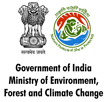
The target landscapes under the SGP-OP7 include regions in India that have a relatively high population belonging to vulnerable and often marginalized communities in India. In the North eastern Region, 21.9% of the population belongs to the Scheduled Tribe (ST) which is one of the most vulnerable populations in India. In the Indian Coastal Region, 3.7% of the population in this region belongs to the Scheduled Tribe or the ST community while about 4.9% belongs to the Scheduled Caste or the SC community. The Central Semi-arid Region, on the other hand, has a Scheduled Tribe (ST) population of 27.1% implying the existence of a large vulnerable human population that has an even more marginalised access to resources. These communities are important stakeholders in conserving biodiversity, mitigating climate change or preventing and treating land degradation especially because they live in close contact with their environment and natural ecosystems, often depending on them for day to day survival.
Out of the regions under consideration, coastal Maharashtra consists of a population that has about 5% of its population belonging to the Schedule Caste or the SCs. The SGP focuses on community engagement and the improvement in the social ecology in the selected regions in consideration of the increased vulnerability of such groups residing in the selected project landscapes. It also gives the community members new opportunities and responsibilities such as allowing them to run the projects alongside the other stakeholders. Such activities not only ensure their active involvement but also desired outcomes as these populations show perseverance to better their situation. Inclusivity ensures the sustainable development maxim of ‘leave no one behind’.
एसजीपी-ओपी7 के अंतर्गत लक्षित लैंडस्केप में भारत के ऐसे क्षेत्र शामिल हैं जिनकी अपेक्षाकृत अधिक जनसंख्या, भारत में असुरक्षित और प्रायः सीमांत समुदायों से संबंधित है। पूर्वोत्तर क्षेत्र में, 21.9% जनसंख्या अनुसूचित जनजाति (एसटी) से संबंधित है जो भारत में सबसे असुरक्षित जनसंख्या में से एक है। भारतीय तटीय क्षेत्र में, इस क्षेत्र की 3.7% जनसंख्या अनुसूचित जनजाति या एसटी समुदाय से संबंधित है जबकि लगभग 4.9% अनुसूचित जाति या एससी समुदाय से संबंधित है। दूसरी ओर, मध्यवर्ती अर्ध-शुष्क क्षेत्र में अनुसूचित जनजाति (एसटी) की जनसंख्या 27.1% है, जिसका अर्थ है कि वहां एक बड़ी असुरक्षित मानव जनसंख्या का अस्तित्व है संसाधनों तक जिसकी पहुंच और भी सीमांत है। ये समुदाय जैव विविधता के संरक्षण, जलवायु परिवर्तन में कमी, या भूमि निम्नीकरण की रोकथाम और उपचार में महत्वपूर्ण हितधारक हैं, विशेषकर इसलिए क्योंकि वे अपने पर्यावरण और प्राक़तिक पारिस्थितिकी प्रणाली के निकट संपर्क में रहते हैं, और दैनिक जीवन-निर्वाह के लिए उन पर निर्भर रहते हैं।
विचाराधीन क्षेत्रों में से, तटीय महाराष्ट्र की जनसंख्या में, इस जनसंख्या का लगभग 5% भाग अनुसूचित जाति या एससी से संबंधित है। चयनित प्रोजेक्ट लैंडस्केप्स में आवासित इन समूहों की बढ़ती असुरक्षा को ध्यान में रखते हुए एसजीपी, चयनित क्षेत्रों में सामुदायिक सहभागिता और सामाजिक पारिस्थितिकी में सुधार पर केंद्रित है। यह समुदाय के सदस्यों को नए अवसर व जिम्मेदारियां भी प्रदान करता है जैसे कि उन्हें अन्य हितधारकों के साथ प्रोजेक्ट्स संचालित करने की सुविधा देता है। ऐसे गतिविधियां न केवल उनकी सक्रिय सहभागिता सुनिश्चित करते हैं बल्कि वांछित परिणाम भी प्रदान करते हैं क्योंकि ये लोग अपनी परिस्थिति को बेहतर बनाने के लिए दृढ़ता प्रदर्शित करते है। समावेशी सोच में, 'कोई भी पीछे न छूटे' के विचार के साथ स्थायी विकास सुनिश्चित किया जाता है।




